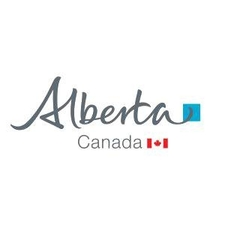URANIUM
Type of resources
Topics
Keywords
Contact for the resource
Provided by
Formats
Representation types
Update frequencies
status
-

This GIS dataset depicts locations of radioactive sites on the Alberta Shield reported by J.D. Godfrey in 1986. These data were created in ArcInfo coverage format and distributed in a shapefile format.
-

Locations of uraniferous boulders fields and uraniferous swamps extracted from industry assessment reports are useful metallogenetic indicators for uranium exploration within and around the Athabasca Basin. They are used as pathfinders to uranium occurrences and prospects. These locations along the northern rim of the Athabasca Basin in Alberta have been compiled in GIS format and delivered as a polygon shapefile. In Alberta, the northern rim of the Athabasca Basin and the regolith underlying the Athabasca unconformity are locally exposed along the northern shore of Lake Athabasca. Extensive uranium exploration work in the 1970s, including scintillometer prospecting traverses, geological mapping, airborne and ground geophysics, and drilling, have documented several uraniferous outcrops with scintillometer readings of up to 10 000 counts per second, and uraniferous boulders and boulder trains with radioactivity up to two orders of magnitude higher than the background. Near the Alberta-Saskatchewan border, uraniferous boulders show geochemical characteristics consistent with a Saskatchewan source, whereas to the west boulders have a distinct geochemical signal suggesting a local source in Alberta.
-

This GIS dataset is part of a digital compilation of the Precambrian geology of the Alberta portion of the Canadian Shield and Athabasca Basin. It is one of the datasets used to produce Alberta Geological Survey (AGS) Map 537. For the Alberta shield, the compilation integrates detailed mapping by both AGS and the Geological Survey of Canada (GSC) at scales ranging between 1:31,680 and 1:250,000. Geochronological data and interpretations also helped prepare this dataset. For the Athabasca Basin, the compilation incorporates the geology of the basin presented in the ExTech IV volume, published in 2007 by the GSC. This dataset tries to present the geological information in a neutral manner, unbiased by the three mutually exclusive, regional tectonic concepts existing at the time of compilation. Users are encouraged to view AGS Map 537, which contains overviews of the geology of the respective areas and a complete reference list. The polygon feature dataset came from existing, though largely unpublished, digital sources. Areas of the shield are mainly from digitized versions of AGS Maps 180 and 25: the shield north of Lake Athabasca and south of the Athabasca Basin, respectively.
-

Alberta Geological Survey Bulletin 64 documents 190 metallic mineral occurrences. We have digitized these occurrences into GIS format as a point shapefile. The description of these 190 metallic mineral occurrences on the exposed Precambrian Shield of northeast Alberta provides models for mineral deposition, establishes exploration targets and gives insights into the economic potential of the mineral showings. Commodities include gold, uranium, base metals and rare-earth elements. Among these occurrences, we have investigated 20 of them sufficiently, and they are of sufficient exploration importance to be classified as a mineral showing.
-

Locations of uraniferous boulder-fields and uraniferous swamps extracted from industry assessment reports are useful metallogenetic indicators for uranium exploration within and around the Athabasca Basin. They are used as pathfinders to uranium occurrences and prospects. These locations along the northern rim of the Athabasca Basin in Alberta have been compiled in GIS format and delivered as a point shapefile. In Alberta, the northern rim of the Athabasca Basin and the regolith underlying the Athabasca unconformity are locally exposed along the northern shore of Lake Athabasca. Extensive uranium exploration work in the 1970s, including scintillometer prospecting traverses, geological mapping, airborne and ground geophysics, and drilling, have documented several uraniferous outcrops with scintillometer readings of up to 10 000 counts per second, and uraniferous boulders and boulder trains with radioactivity up to two orders of magnitude higher than the background. Near the Alberta-Saskatchewan border, uraniferous boulders show geochemical characteristics consistent with a Saskatchewan source, whereas to the west boulders have a distinct geochemical signal suggesting a local source in Alberta.
-

This GIS dataset is part of a digital compilation of the Precambrian geology of the Alberta portion of the Canadian Shield and Athabasca Basin. It is one of the datasets used to produce Alberta Geological Survey Map 537. The dataset displays Alberta shield locations where we took rock samples for uranium-lead dating. Alberta Geological Survey compiled the data from published literature. Attributes include crystallization and/or cooling age, mineral analyzed, sample identifier and rock type, literature reference, and analytical method. This is a digital version of the data given in Table 1 of Map 537.
-

This dataset contains information about locations and descriptions of outcrop observations and samples collected in southern Alberta. It also contains full analytical results for rock samples. Results of a small, boat-based radiometric survey conducted in 2007 are given in a separate table. The dataset is associated with Alberta Geological Survey Open File Report 2009-13, Uranium Potential of Southern Alberta: Petrographic Descriptions of Exposed Upper Cretaceous and Tertiary Rock Formations.
-

This dataset evaluates the sandstone-hosted uranium potential of Alberta. An Alberta Geological Survey database of oil and gas well logs were queried to identify wells with gamma values greater than 300 API (American Petroleum Institute units). An algorithm written for this analysis queried more than 48 000 gamma ray logs from more than 22 000 wells. Of those, 11 476 readings greater than 300 API, within the upper 500 metres, were found in 6176 wells. We selected 1318 wells, verified the anomaly and determined rock types using a combination of gamma, density and resistivity logs. This dataset is associated with Alberta Geological Survey Open File Report 2009-0012.
 Arctic SDI catalogue
Arctic SDI catalogue